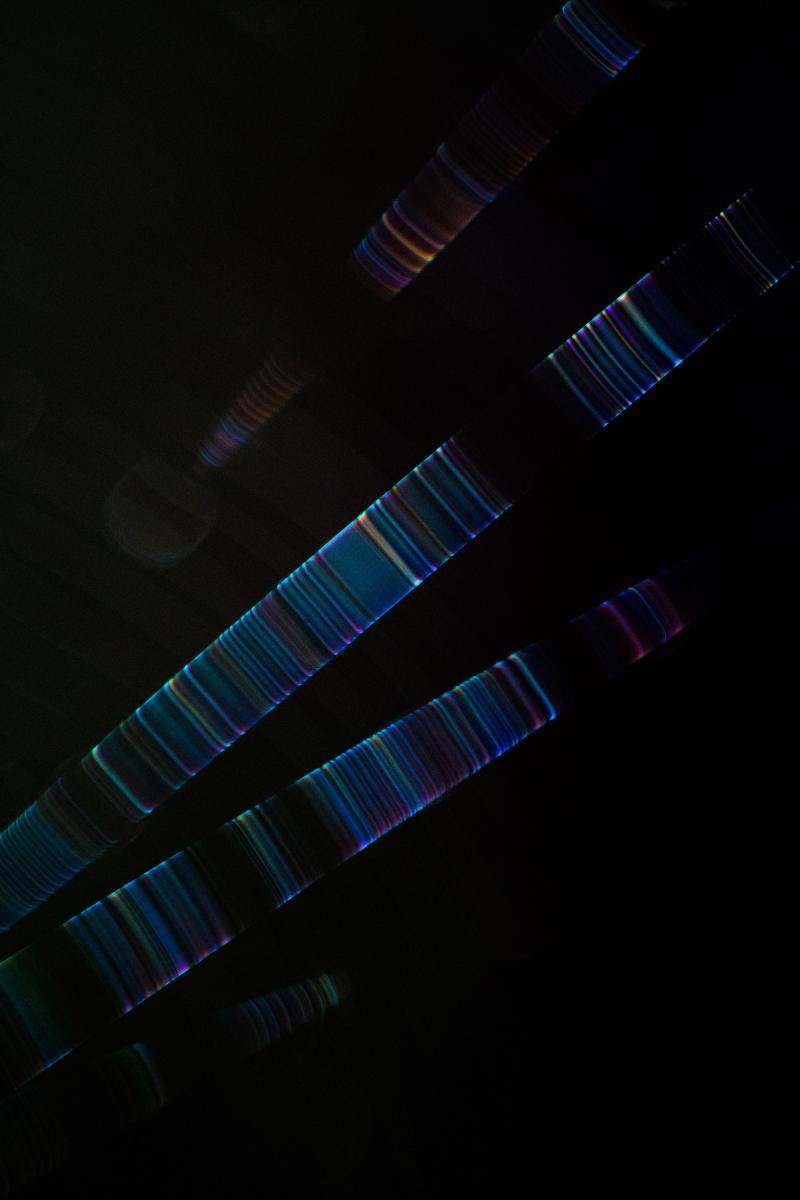A series of photographic field studies that investigate the structural and optical qualities of cobwebs.
One reason for these impressive abstract effects is probably the simultaneous appearance of reflection, refraction and diffraction of light on the threads made by ecribellate spiders. The thin thread, which is neither smooth nor homogeneously round, but crimped and has an uneven cross-section, reflects the light at its surface, while at the same time it shines through it or is diffracted at it, i.e. runs around it. Since the thread is so thin, these effects cannot be considered separately but occur together. The light is thus refracted several times, covering distances of varying lengths to the viewers retina and the camera respectively. This results in an interference, i.e. an amplification or extinction of the waves, which in addition behaves differently for different wavelengths of light. These fine colored dots then become bigger circles and lines due to the blurring of the exposure. In Addition the sticky threads draw moisture from the air, so that the surface tension of the water forms small transparent spheres. These tiny spheres act like lenses and focus light.
One reason for these impressive abstract effects is probably the simultaneous appearance of reflection, refraction and diffraction of light on the threads made by ecribellate spiders. The thin thread, which is neither smooth nor homogeneously round, but crimped and has an uneven cross-section, reflects the light at its surface, while at the same time it shines through it or is diffracted at it, i.e. runs around it. Since the thread is so thin, these effects cannot be considered separately but occur together. The light is thus refracted several times, covering distances of varying lengths to the viewers retina and the camera respectively. This results in an interference, i.e. an amplification or extinction of the waves, which in addition behaves differently for different wavelengths of light. These fine colored dots then become bigger circles and lines due to the blurring of the exposure. In Addition the sticky threads draw moisture from the air, so that the surface tension of the water forms small transparent spheres. These tiny spheres act like lenses and focus light.
| Details | |
|---|---|
| Artwork | Light Structures, No.10, 2017/2020 |
| Material | archival pigment print on Hahnemühle baryta |
